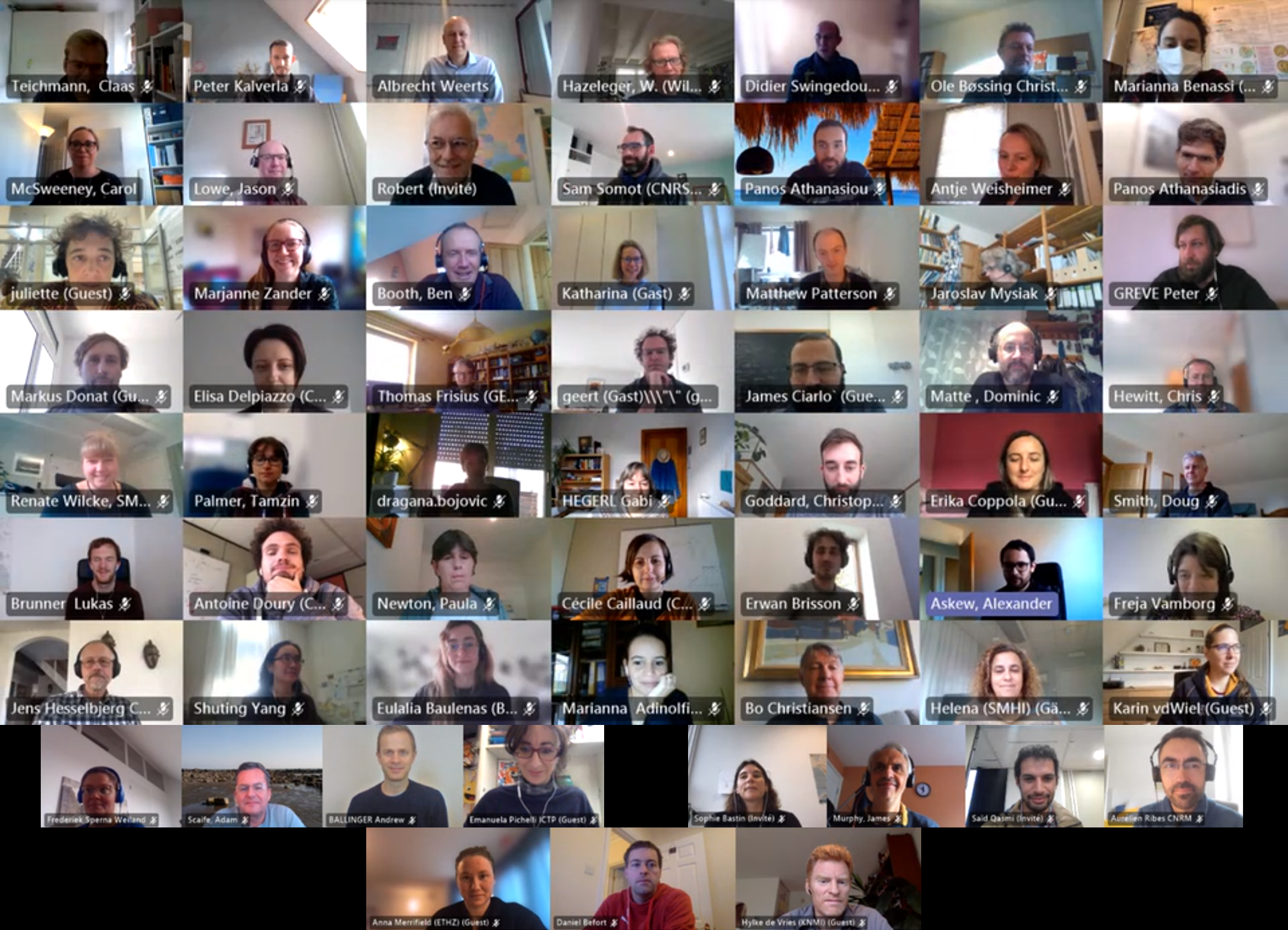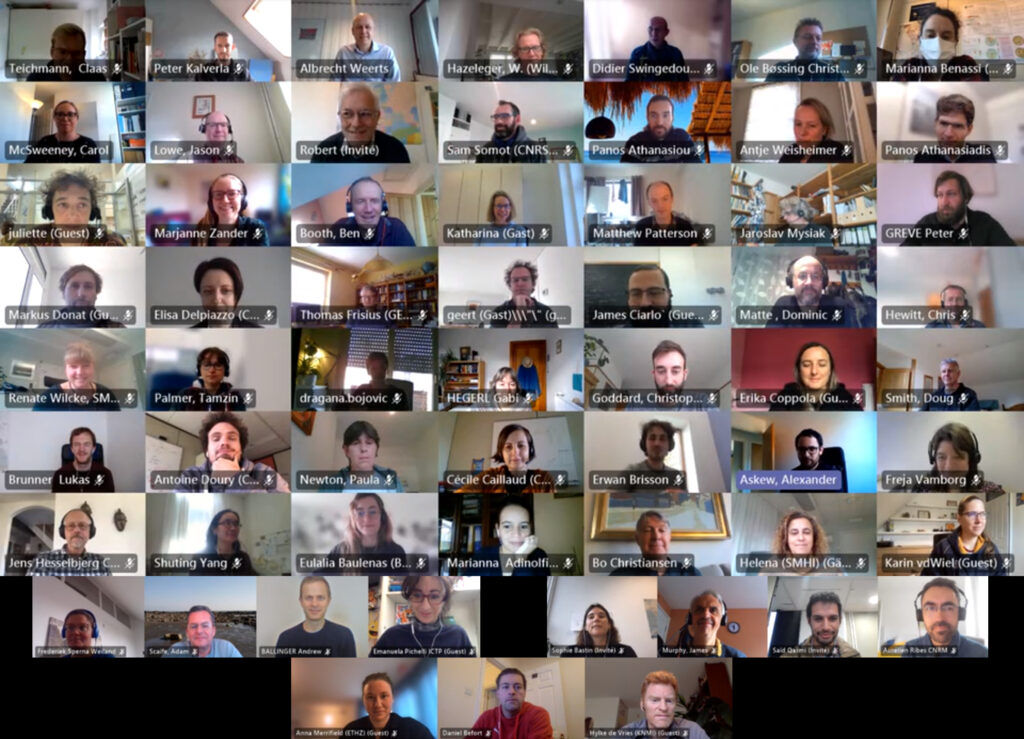Continuing our series of project assemblies, we held a Mini-Assembly on the morning of November 26th 2021. This gave us all the opportunity to share our latest highlights and discuss the future of the EUCP project. More than 70 delegates joined in the virtual session.
Prof. Jason Lowe of the Met Office opened the meeting by highlighting some of our recent successes, including:
- explanatory storyboards in development on our science and its key benefits.
- the number of excellent recent papers we have published in the scientific literature (find out more on our Publications page).
- our recent communications, including our involvement at COP26, our latest Newsletter, and a video we have helped produce on Europe’s climate in 2050, which has already attracted over 100,000 views on YouTube!
Work Package 1 opened the next part of the meeting, highlighting their work on determining the impact of using climate models of different resolutions on simulations of North Atlantic temperatures, and the effect of volcanic eruptions on the climate. Work Package 2 have been working on comparing different ways of weighting climate simulation ensemble members in order to emphasise the ones most consistent with observations. This work is particularly relevant to important IPCC messages on the plausible range of global climate sensitivity to regional projections. WP2 are also developing an atlas which will display the results of several different constraint methods, as well as unconstrained simulations, helping users decide which is best for them.
Work Package 3 told us about the latest progress on their new, very high-resolution projections for European domains, generated using convection-permitting regional models. These simulations offer the first multi-model projections of this kind, allowing us for the first time to assess the uncertainty in the very high-resolution characteristics of these projections, such as extreme sub-hourly rainfall. These simulations are also useful to other teams, including Work Package 4 They described their work applying these new projections to assess flood risk in the Alpine region, as well as other case studies of the risks of drought and storm surge across Europe and the Caribbean. Making these types of projections more usable by those who need them has also been a key focus of this team.
Work Package 5’s work has been all about merging climate projections on different spatial and temporal scales. They have been looking at how simulations of extreme rainfall events scale at different model resolutions, and at how the complexity of a high-resolution model can be replicated in a low-resolution simulation using a neural net-based emulation system. Finally, Work Package 6 gave us all a great overview of the recent Multi-User Forum workshop, in which climate information users had the opportunity to hear directly from scientists about their work and how it could be useful to them in their sector. You can read more about this event here.
Following these science highlights, Assembly delegates had the opportunity to discuss new ideas and initiatives for exploiting these advances. We discussed how we can make the data and science products from the project easy to find and use, as well as how we can continue to engage our users to co-develop products that meet their needs. We had a lively discussion around the development of climate services on a decadal timescale, an extremely collaborative programme of work.
To close the meeting, we devoted time to discussing the closing stages of the EUCP project. As we near the final six months of the project, the legacy of work that will be produced is of great importance and ensuring that it is used to its fullest will be an important task. We also began planning for our final event to close the project, and share and showcase the project’s important developments. Keep looking for further announcements in our Newsletter and social media feeds.





 Funded by the European Union under Horizon 2020.
Funded by the European Union under Horizon 2020.